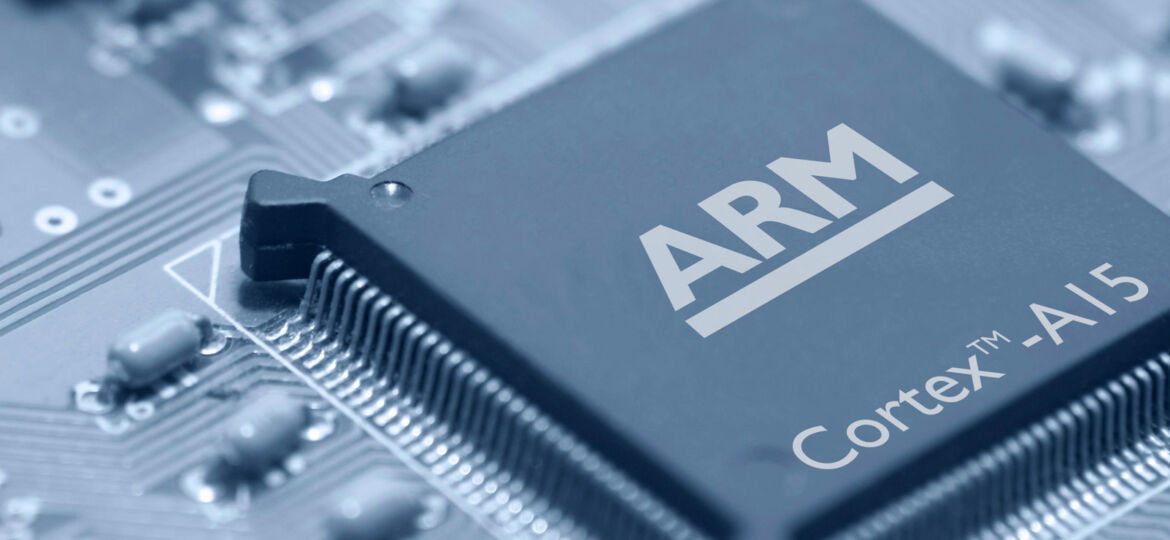
WHY THIS MATTERS IN BRIEF
Intel wants to dominate the next generation of “Things” and it’s joined forces with ARM the industrys’ dominant player.
In a move that would have been jaw dropping a few years ago, Intel’s factories are soon going to be churning out chips based on ARM’s open sourced architectures and it’s thought that Intel paid $10 million for a “Master” ARM license that will allow them to access ARM’s entire library of designs with royalties of cents, or thousands of a cent for every processor they produce.
ARM’s architectures dominate the mobile processor market space, shipping over 50 billion units last year alone – an increase of 18% year on year, and Intel largely owns the desktop but that market has been shrinking ever since tablets appeared on the scenes and despite numerous attempts to revive it Intel has had to come to terms with the uncomfortable fact that the growth in that particular sector is never going to return to the haydays of the 1990’s. Meanwhile intel’s traditional stomping ground, the data center market has been growing but not at the rate that the analysts want or expect so over the past few years Intel has been increasingly trying to diversify into new markets such as switching, wearables and the IoT – the latter two again being dominated by ARM.
So, what might turn out to be a master stroke – for the time being at least, Intel will be using its expensive, state of the art fabrication plants to churn out ARM off the shelf designs and for Intel at least there are many potential advantages. Firstly it help them buy time as they continue to develop their own competitive architectures such as Currie, Eddison, Joule and Quark and secondly it could help them snag Apple who thus far have been tied into working with Samsung on their A line of ARM based processors. Apple have remonstrated that they want to dramatically reduce their reliance on Samsung, their main competitor in the smart phone space, for years and now it looks like Intel can line themselves up to become Samsung’s natural successor.
Intel said optimizing ARM’s technologies for its upcoming 10-nanometer manufacturing facilities would let customers make power-efficient, high-performance chips for mobile, the Internet of things and “other consumer applications,” such as wearables, augmented reality and VR and they have already lined up LG to build “a world-class mobile platform” using Custom Foundry’s 10nm processes.
Broadly speaking the smaller the scale on which you build components, the more power efficient you can make them and this matters a great deal for embedded electronics, which are essential for mobile and the Internet of Things – ARM’s main stomping ground. Manufacturing facilities using 10nm processes are state of the art provided that Intel can get them up and running fast enough. Meanwhile one of intel’s main competitors, Taiwan Semiconductor Manufacturing Company (TSMC), is looking to start trial production using 7nm processes next year.
As for ARM, which just got bought by SoftBank, they said in a blog post that people shouldn’t be surprised to see it collaborating with Intel.
“Despite press stories, Intel and ARM have worked together for years to help enable the ecosystem, and this is just the latest milestone in that long-standing relationship,” wrote Will Abbey, the general manager of ARM’s physical design group.
“I see it as a natural evolution of the design ecosystem: ARM is a leader in processor and physical design, and Intel Custom Foundry is a leading integrated device manufacturer. This combination is a win-win for customers.”
It’s certainly a way for Intel to stake out territory in the mobile processor business, despite the failure of its previous attempts to tempt people away from ARM. Intel is now rather moving to tempt customers away from key manufacturing rivals such as Samsung and one thing is for certain, competitors that once thought they had an easy ride now have an Elephant in the room and I’m sure it’s going to make sure everyone hears about its new partnership.
















